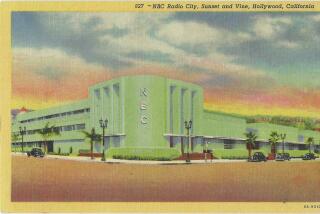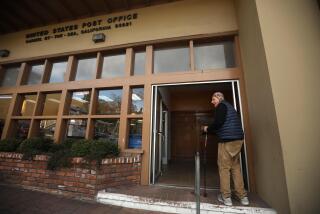New Westside Phone Overlay Raises Questions
The launch of the state’s first area code overlay last weekend caught many callers by surprise--despite phone company efforts to prepare them for the change. The new overlay code--424--was added to the 310 region Saturday to provide more phone numbers without further dividing up the Westside of Los Angeles.
Using the overlay method enables existing customers to keep their area code. But that benefit comes at a cost: Because two area codes serve the same region, callers in the 310/424 area must dial the full number (1 + area code + the seven-digit number) on all calls--even those within the same area code.
“People are trying to get used to dialing 11 digits,” said Julia Wilson, spokeswoman for GTE. “But the feeling I get is that most people are frustrated about area codes in general.”
Indeed, the pace of change has added to growing frustration nationwide over the near-constant introduction of area codes. California has 24 codes and is expected to have 40 by the end of 2002.
All this has left people asking how to slow down the need for more codes.
Question: What’s causing the need for all of these area codes?
Answer: The growing use of pagers, mobile phones, Internet access lines and machines that use phone lines to transmit data (such as credit card verification systems and cash machines), contribute to the phone number crunch.
But the bigger problem stems from the longtime industry policy of issuing numbers to companies in blocks of 10,000 (all the numbers available using a given three-digit prefix), even though many companies aren’t able to use them up.
*
Q: Why is it done that way?
A: Issuing numbers by prefix predates the recent wave of deregulation to a time when there were monopoly carriers and issuing 10,000-number blocks was the accepted way of distributing numbers. No one foresaw the need for smaller increments.
In addition, prefixes are tied to specific geographic regions so that phone equipment can determine the distance--and the price--of phone calls. That means a company cannot take its unused numbers in one prefix and use them for customers across town.
Instead, a phone company has to acquire an entire prefix for each geographic region it wants to serve, even if it has only a smattering of customers in each area. Carriers wanting to serve Los Angeles need 14 prefixes, or 140,000 numbers. That’s because Los Angeles is divided into 14 “rate centers,” or geographic points that act as mileage markers for all calls. So, for statewide service, a carrier would need nearly 8 million numbers.
*
Q: How many phone numbers are left unused?
A. Millions. In fact, under the current system, only a fraction of the phone numbers that have been assigned to a carrier are in use. For example, phone company X may be allocated 10,000 numbers to serve the Hollywood area, but may have customers lined up for just 4,000 phone numbers. The remaining 6,000 numbers are “stranded” until the company finds customers for them. They cannot be distributed to other carriers needing numbers for Hollywood.
The problem of stranded numbers has been exacerbated in recent years by the sharp rise in phone companies in California--190, at last count--each one needing batches of numbers.
Only 30 million phone numbers are in use statewide, despite enough area codes to provide more than 180 million numbers, according to one estimate. Nonetheless, because most of those numbers have already been assigned to phone companies, the area code administrator faces constant prefix shortages and must press forward with plans for new area codes.
*
Q: Can we just switch to eight-digit local numbers?
A: Yes. The amount of time and expense of the change would be enormous, however.
The entire numbering plan for the United States, Canada and Caribbean nations is based on a system with a fixed-length numbering scheme that includes a three-digit area code, a three-digit prefix and a four-digit line number. Abandoning the three-three-four system would require changes to every telephone, pager, phone switch, company phone system, alarm system and computer with dialing functions.
For that reason, regulators and others view expanding the numbering system--through lengthening the area code, the prefix or both--as a long-term solution. But at the current pace of area code introductions, regulators face the possibility of running out of area codes--which would force the move to longer numbers.
*
Q: What about assigning new codes to fax machines, pagers or other specialty uses to reduce the disruption?
A: Federal regulations prohibit “technology-based” area code assignments. Attempts to enact such systems have been challenged in court or overturned by the Federal Communications Commission.
Some states have pressed the FCC to reconsider its position, but the commission has said usage-based code plans are potentially discriminatory.
If all wireless phones were given a new area code, for example, customers who choose wireless service to replace their traditional phone line would have to change their area code and telegraph their use of wireless. The FCC, eager to promote competition regardless of the technology employed, has ruled that separate area codes would create an artificial barrier that could discourage innovative blending of the technologies.
And phone companies have no way to monitor how a customer uses a phone line because the same line can be used for Internet access, fax machines or voice service--or for all three.
*
Q: What solutions are in the works?
A: Both federal and California regulators are reviewing proposals for slowing the area code onslaught. The state has some powers, but most solutions would require action by the FCC.
There is substantial support for a process called “number pooling,” which would allow numbering administrators to abandon the 10,000-number minimum and instead issue phone numbers in blocks of 1,000. That step alone would save millions of numbers. Another plan would issue numbers on an as-needed basis instead of using blocks of any particular size.
Regulators also are reviewing a series of policy changes that would eliminate other wasteful practices. Under one proposal, number planners could recoup unused numbers from carriers and make them available for assignment to other phone companies. Another would allow audits and tighten rules to make sure phone companies are not stockpiling numbers.
More to Read
Sign up for Essential California
The most important California stories and recommendations in your inbox every morning.
You may occasionally receive promotional content from the Los Angeles Times.










